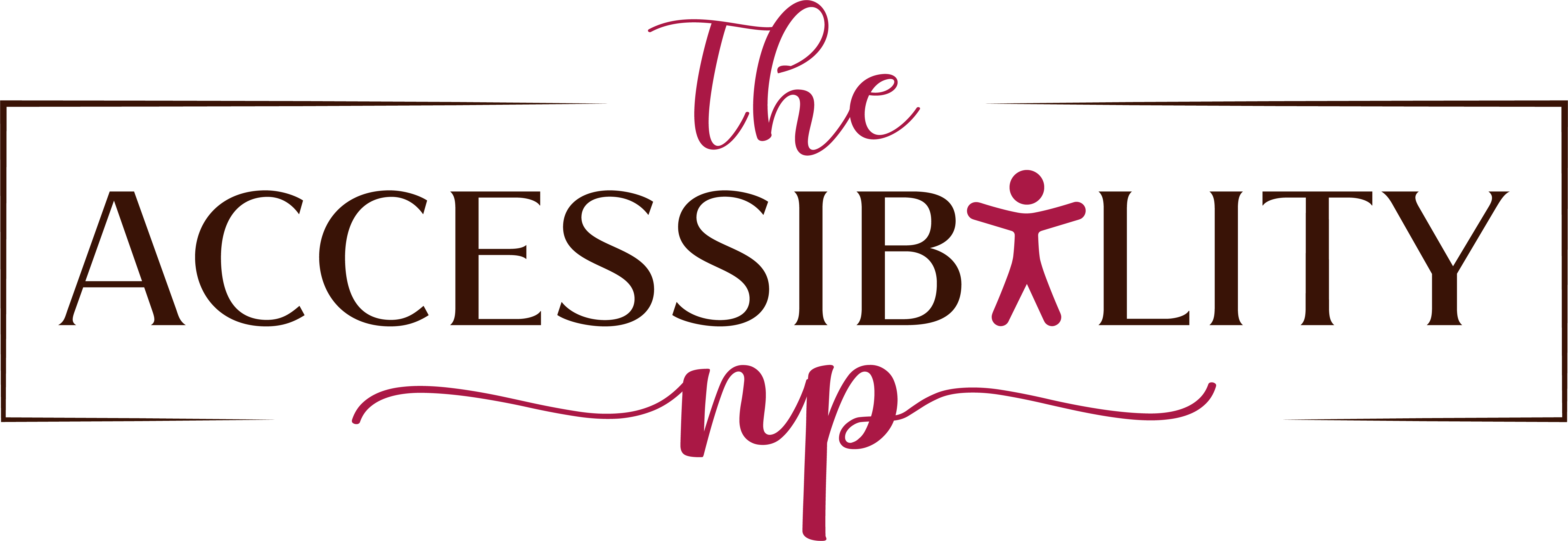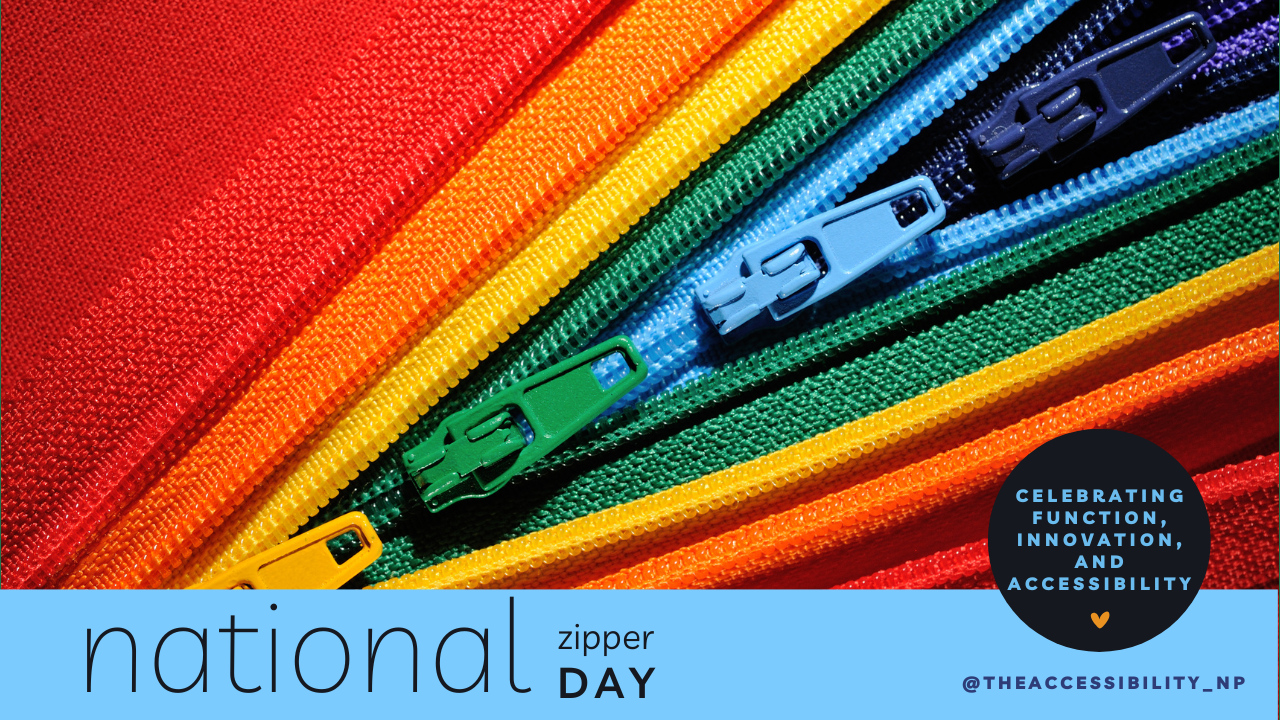National Zipper Day, celebrated annually on April 29, honors the invention and widespread use of a tool we encounter daily but often take for granted – the zipper. This small but mighty innovation has revolutionized clothing, bags, and countless other items since its patent in 1917. For many, the zipper represents convenience and practicality, but for individuals with fine motor challenges, this everyday tool can pose significant barriers.
In honor of National Zipper Day 2025, we not only celebrate its historical impact but also explore ways to make zippers more accessible for disabled individuals through assistive technology (AT) and adaptive tools.
The History of the Zipper
The concept of the zipper was born through a series of inventive minds. Elias Howe, the inventor of the sewing machine, patented an early version called the “Automatic Continuous Clothing Closure” in 1851. However, it was Whitcomb Judson, in 1893, who brought a similar invention to the public, calling it the “Clasp Locker.”
The zipper we recognize today was perfected by Gideon Sundback, a Swedish-American engineer. In 1917, Sundback secured a patent for the “Separable Fastener,” featuring interlocking teeth and a slider mechanism. Over the decades, zippers became essential in fashion, outdoor gear, and accessories, symbolizing utility and style.
Barriers to Zipper Use
While zippers are a simple solution for most, they can present challenges for individuals with:
- Fine motor difficulties
- Limited hand strength or dexterity
- Sensory sensitivities
- Visual impairments
For disabled individuals, traditional zippers can make dressing independently or accessing essential items more difficult. Fortunately, assistive technology and adaptive tools provide inclusive solutions to reduce these barriers.
Assistive Technology and Tools for Zipper Accessibility
Here are innovative tools and supports that promote zipper use for individuals of all ages and abilities:
Zipper Pull Tabs
How They Work: Zipper pull tabs, often larger and textured, replace standard small metal pulls, making them easier to grasp.
- Examples:
- Ergonomic Zipper Pulls: Made of rubber or fabric loops for individuals with limited grip.
- Textured or Weighted Pulls: Enhance sensory input for those with sensory sensitivities.
Who Benefits: Individuals with arthritis, fine motor delays, or low hand strength.
Adaptive Zipper Tools
How They Work: These tools provide additional leverage or grip to assist in pulling a zipper up or down.
- Examples:
- Zipper Helper: A hook or grip tool that attaches to zippers for easy pull.
- Button and Zipper Assist Tools: Multi-functional tools that assist with both zipping and buttoning.
Who Benefits: Individuals with reduced dexterity, paralysis, or limited range of motion.
Magnetic Zippers
How They Work: Magnetic zippers use magnets instead of interlocking teeth to “click” the zipper into place, making them easier to align and fasten.
- Examples:
- MagZip by Under Armour: Designed with a magnetic base, this zipper aligns itself.
- Adaptive Jackets with Magnetic Closures: Fashion-forward and functional for everyday wear.
Who Benefits: Individuals with limited hand coordination, vision impairments, or fine motor challenges.
Velcro and Alternative Fasteners
How They Work: For individuals unable to operate zippers, alternative closures like Velcro strips mimic the look of a zipper but are simpler to manipulate.
- Examples:
- Velcro clothing designed for children or adults.
- Zipper overlays that secure with magnets or Velcro.
Who Benefits: Individuals with profound fine motor or mobility challenges who need alternative solutions.
AT-Compatible Clothing
How It Works: Clothing companies are increasingly prioritizing accessible fashion. AT-compatible clothing integrates adaptive fasteners, magnetic zippers, and pull tabs to promote independence.
- Examples:
- Tommy Hilfiger Adaptive Collection
- Kohl’s Adaptive Clothing Line
- Target’s Cat & Jack Adaptive Line
These lines provide clothing options for children and adults that are not only functional but stylish, ensuring inclusivity in fashion.
AT for Zipper Practice and Skill Development
How It Works: AT tools and apps support individuals in learning or practicing the motion of zipping.
- Examples:
- Fine Motor Practice Boards: Tools that include zippers, snaps, and buttons to practice dressing skills.
- Dressing Frames: Designed for occupational therapy, these frames allow repetitive practice.
Who Benefits: Children developing motor skills, individuals recovering from injuries, or those with developmental delays.
Tips for Making Zippers More Accessible
For individuals who require customized approaches, consider the following strategies:
- Replace small zipper pulls with key rings or loops for improved grip.
- Use cord stops (commonly used in outdoor gear) to extend zipper pulls.
- Sew or attach ribbons or lanyards to zippers for added leverage.
- Choose clothing and bags that feature easy-access zippers with larger sliders.
Occupational Therapy and Zipper Use
Occupational therapists (OTs) play a vital role in helping individuals develop zipper skills. OT sessions may include:
- Fine motor exercises to build hand strength and coordination.
- Task sequencing activities to break down zipper use into manageable steps.
- Sensory-friendly practice for individuals with sensory sensitivities to the feel or sound of zippers.
Promoting Independence Through Accessible Zippers
Accessible zippers and assistive technology empower individuals to dress, manage personal belongings, and complete tasks independently. These small changes enhance autonomy and dignity in everyday life.
For children, mastering zipper use fosters confidence and motor skill development. For adults, adaptive zippers can improve efficiency, reduce frustration, and increase participation in daily activities.
Celebrating Inclusive Innovation
On National Zipper Day 2025, let’s celebrate not only the historical impact of zippers but also their evolution toward accessibility and inclusion. By embracing adaptive tools and assistive technology, we can ensure zippers remain practical and inclusive for everyone.
From magnetic zippers to adaptive clothing lines, these solutions help remove barriers and create a world where function and style coexist.
Happy National Zipper Day – here’s to small innovations making a big difference!
At The Accessibility NP and Comforting Solutions LLC, we’re committed to promoting inclusive solutions for everyday barriers. Explore our resources for assistive technology and adaptive tools to support independence and accessibility.
See you next Monday. Stay inspired and keep pushing for accessibility!

